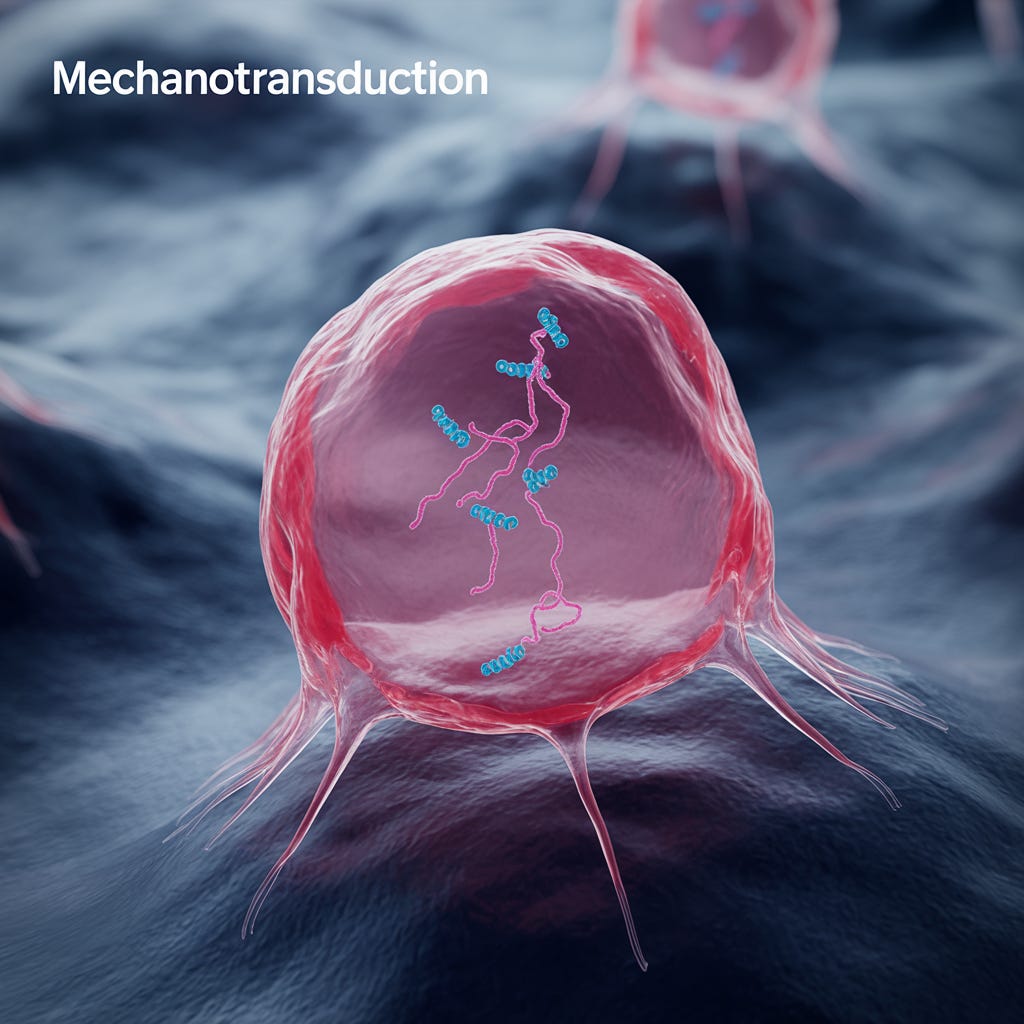Cells and Vibration
How cells are stimulated by vibration and sound
To learn more about mechanotranduction and how cells are stimulated by vibration check out this Nature article.
How Cells "Feel" and Respond to Physical Forces
The Simple Idea
Imagine your cells are like tiny people who can feel when they're being pushed, pulled, squeezed, or stretched. When they feel these forces, they respond by changing how they behave - kind of like how you might tense up when someone pushes you.
What Forces Do Cells Feel?
Think of everyday examples:
Pressure - Like when you squeeze a stress ball, your heart pumps blood, or your bladder fills up
Flowing fluids - Like water flowing over rocks in a stream (but it's blood flowing over the walls of your blood vessels)
Stretching - Like pulling a rubber band (your muscles and skin stretch when you move)
Stiffness - Like the difference between jello and concrete (some tissues are soft, others are firm)
Thickness of fluids - Like the difference between water and honey
Why It Makes A Difference?
When it works well:
Helps babies develop properly in the womb
Helps cuts and wounds heal
Keeps your heart and blood vessels healthy
Helps bones stay strong
When it goes wrong:
Can cause scar tissue (fibrosis) in organs like lungs, liver, or heart
Can help cancer spread
Can make diseases worse
The Cell's "Feeling" System
Cells have special proteins that work like tiny sensors:
Door sensors (Piezo channels) - Open and close like automatic doors when pushed
Anchor proteins (Integrins) - Connect cells to their surroundings like anchors
Messenger proteins (YAP/TAZ) - Carry messages to the cell's control center when activated
Real Life Examples
Your heart - Heart cells feel the stretch when blood fills the heart and respond by pumping harder
Your bones - Bone cells feel the pressure from walking and respond by staying strong
Wound healing - Skin cells feel tension around a cut and work to close it up
Blood vessels - The cells lining blood vessels feel blood flowing past and adjust to keep blood pressure normal
The Big Picture
Just like you need the right amount of exercise (not too little, not too much), your cells need the right amount of physical force to stay healthy. Too little and they get weak, too much and they can get damaged or cause problems.
Scientists are learning how to use this knowledge to:
Help wounds heal better
Treat diseases caused by too much scar tissue
Understand how cancer spreads
Design better treatments that work with your body's natural systems
Think of it as learning the "body language" of your cells!

